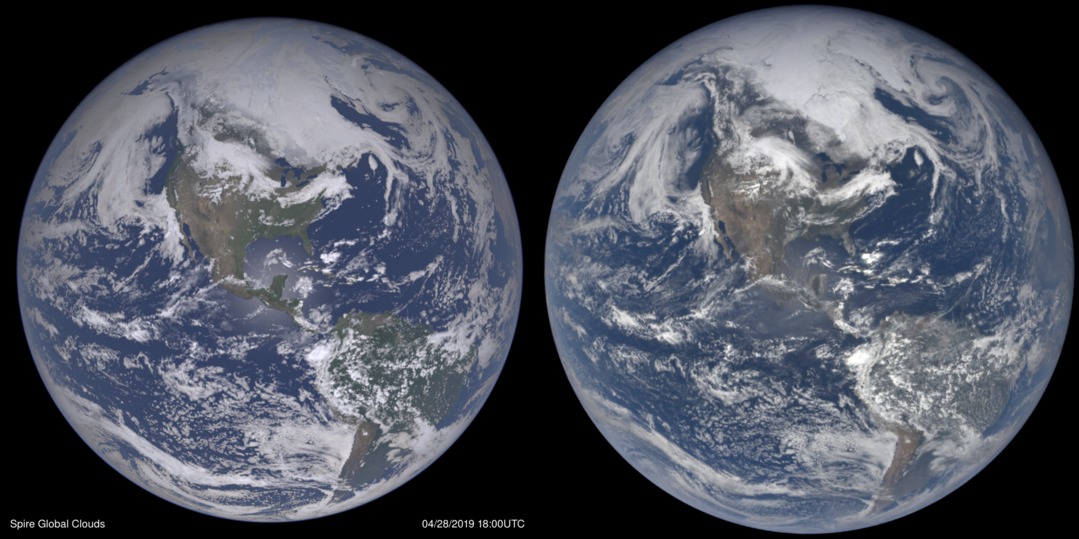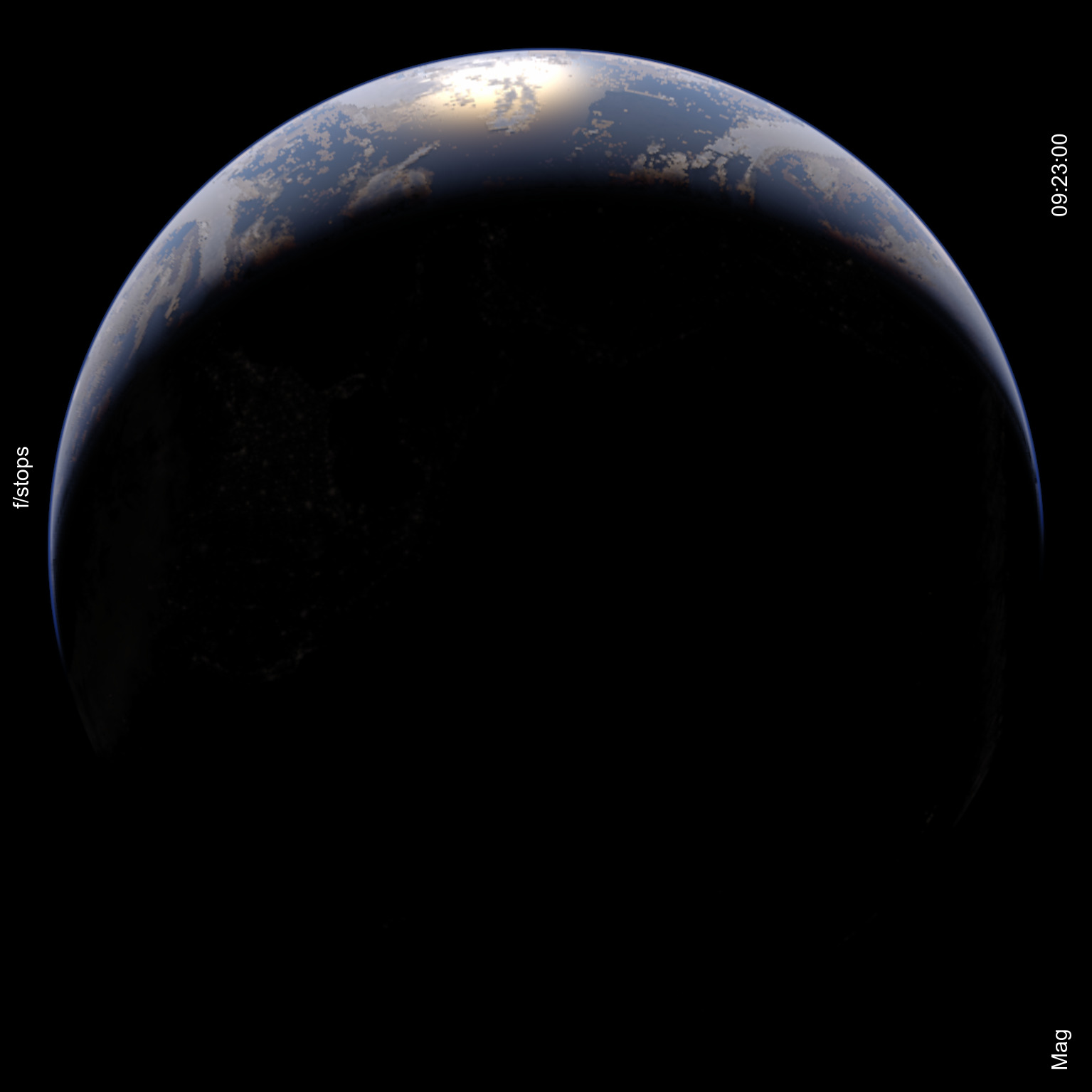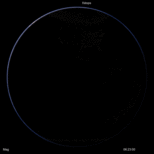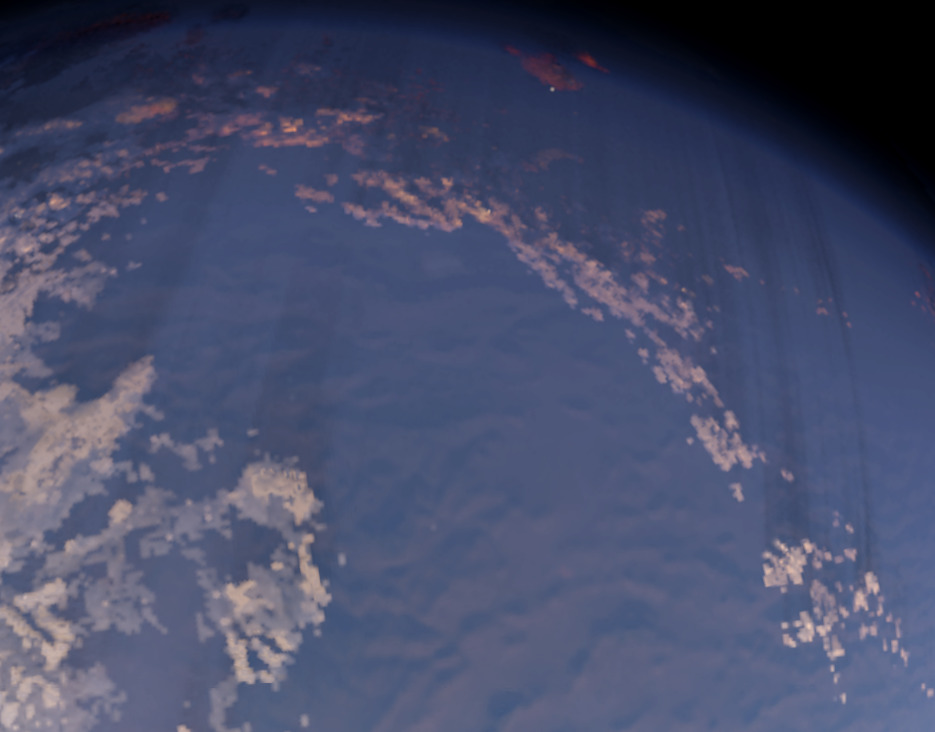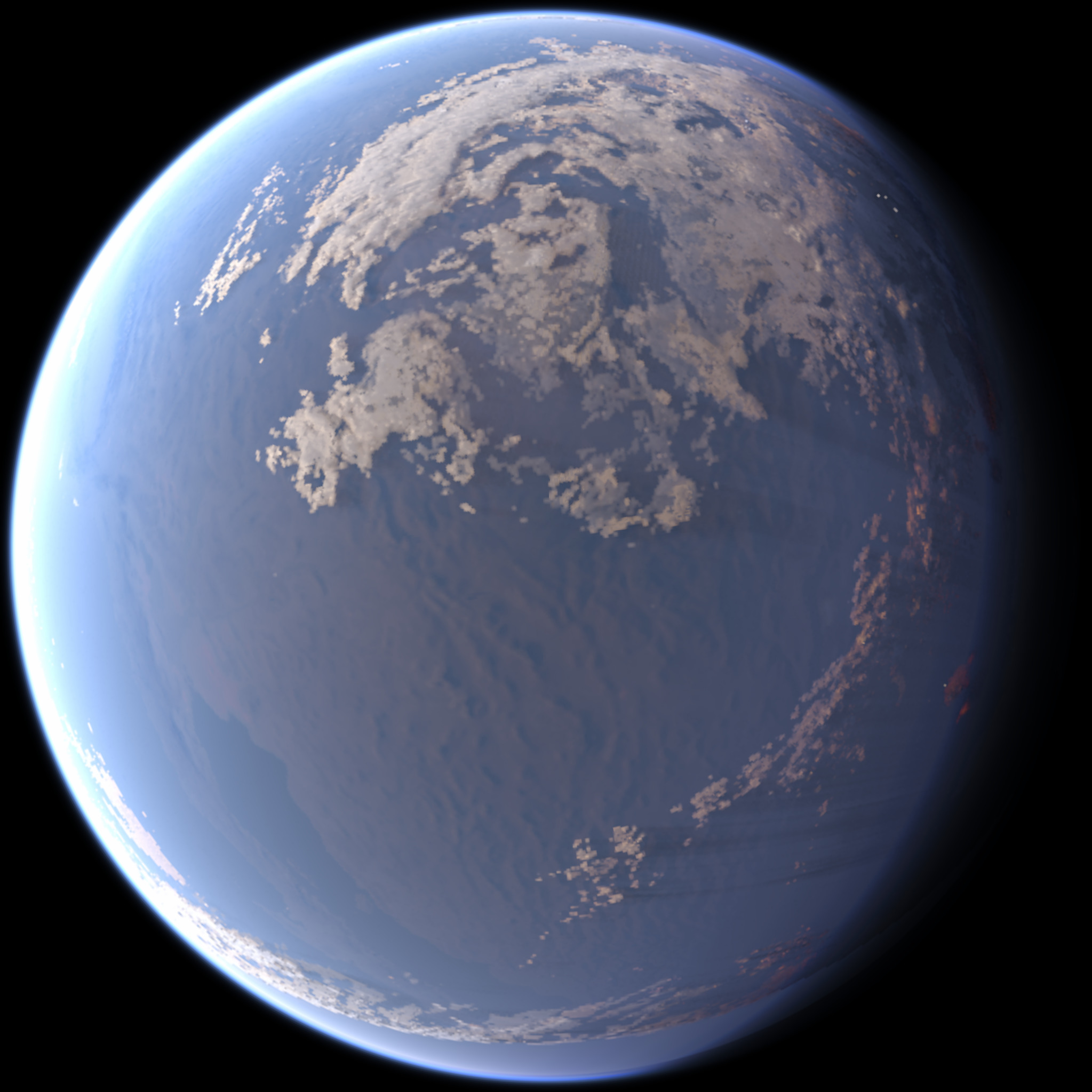Above is a simulated crescent earth view from the same distance. Compare with an actual image from the Rosetta spacecraft as it flew by Earth. Here is an animated version showing various phases that can be compared with this sequence from Himawari.
Here are two simulated views from the 400km altitude of the International Space Station.
Clouds turn redder near the sunset line, and cloud shadows can be seen cast both on the land and in the air. This
is what crepuscular rays look like from space.
The bottom is a full polar view where the limb is about 2000km (20 degrees great circle distance) from the observer.
This is the same angle as the horizon depression.
Compare to this
actual ISS view
from a similar scenario as posted by "john71" on the Celestia forum.


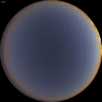
Here we see more of what twilight looks like from space, complete with crepuscular rays.
The location under the observer has the sun about 2 degrees below the horizon.
Click for an animated launch sequence from ground level to 400km altitude as
polar
or
cylindrical
GIFS.
The polar version looks up for the first 15km, then looks down.
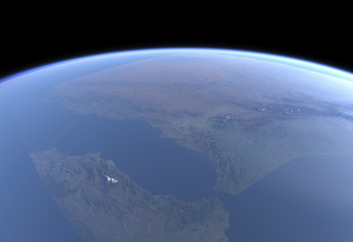
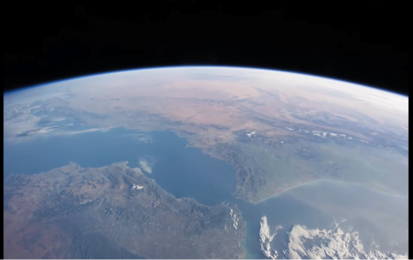
Above are simulated and actual ISS views of the Strait of Gibraltar with surrounding views of Africa off to the distance in the south.
Although clouds are not included in the simulation there is an idealized aerosol layer that roughly matches the actual scene.
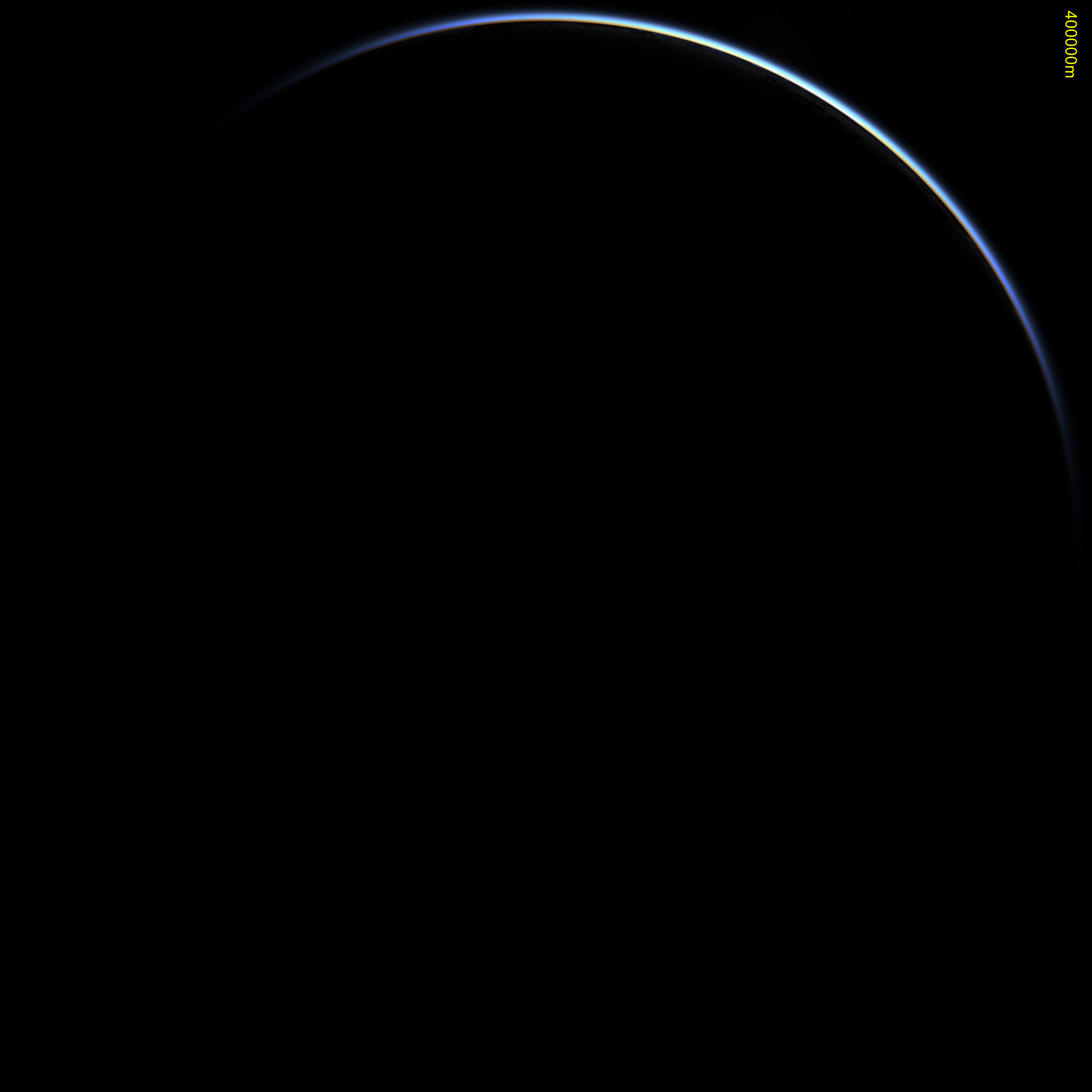
Here is a simulation of a sunset from the ISS.

Simulated view of Earth during the upcoming solar eclipse in 2017, without clouds or sea ice.
Here is an animation
using an MP4 file.
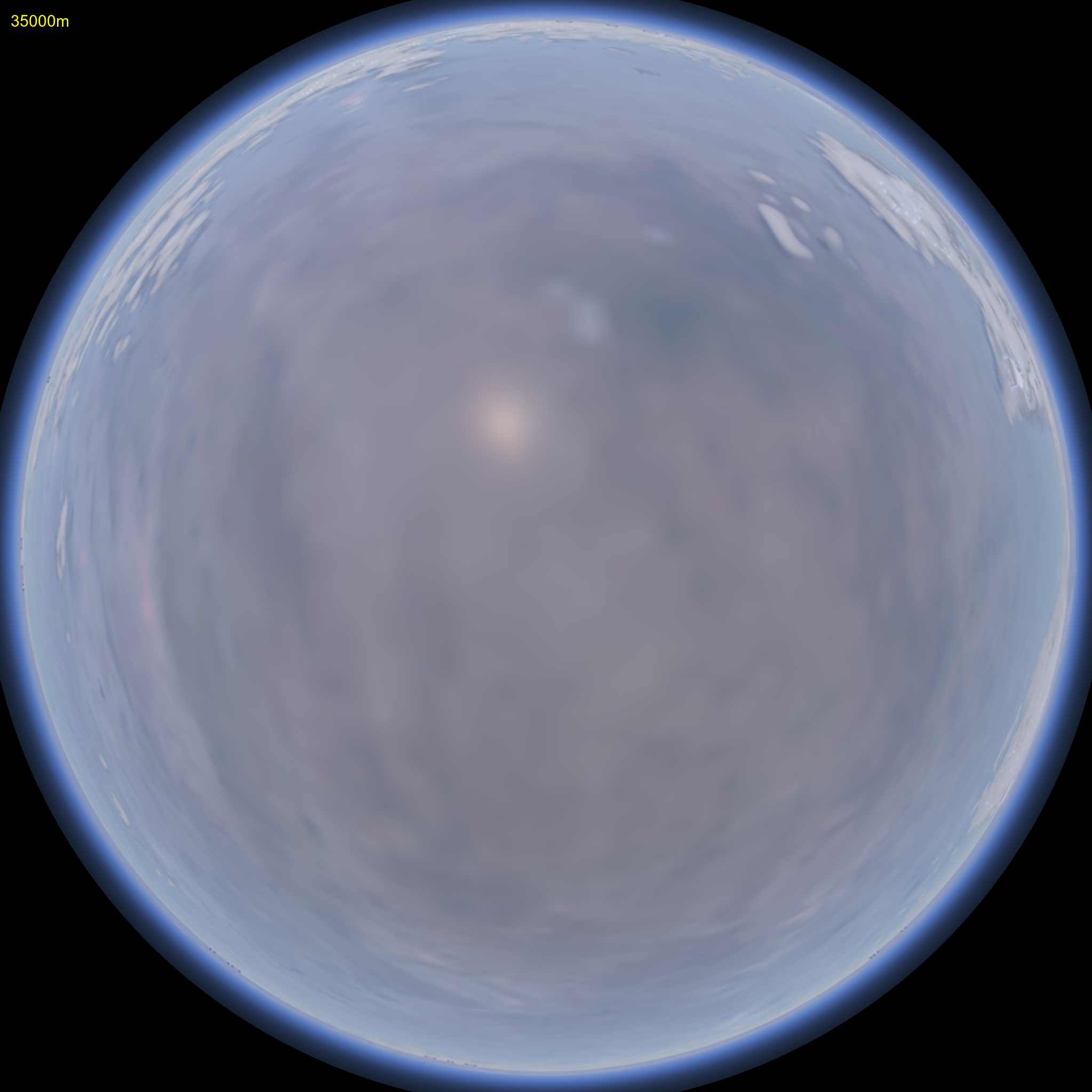
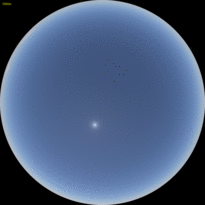
Simulated view of launching from Earth with a high sun angle. Altitude in meters
is shown in the upper left corner.
Here is an animation
as a polar view animated GIF
and
a cylindrical view animated GIF.
The polar version looks up for the first 15km, then looks down.
Some of the rainbows could be real from the launch perspectives though are probably overdone a bit.

Here are some additional views from low Earth orbit (LEO) altitudes.
An example shown above is just after sunrise from 200km altitude. This considers lighting
components such as atmospheric sunlight scattering, zodiacal light and solar corona, airglow, stars, city lights, and the Milky Way.
An empirical model was constructed that links together the brightness from the zodiacal light blending smoothly into the solar (F) corona.
It may help to turn up your screen brightness to see the outer zodiacal light and Milky Way better. Clouds were omitted from these renderings.
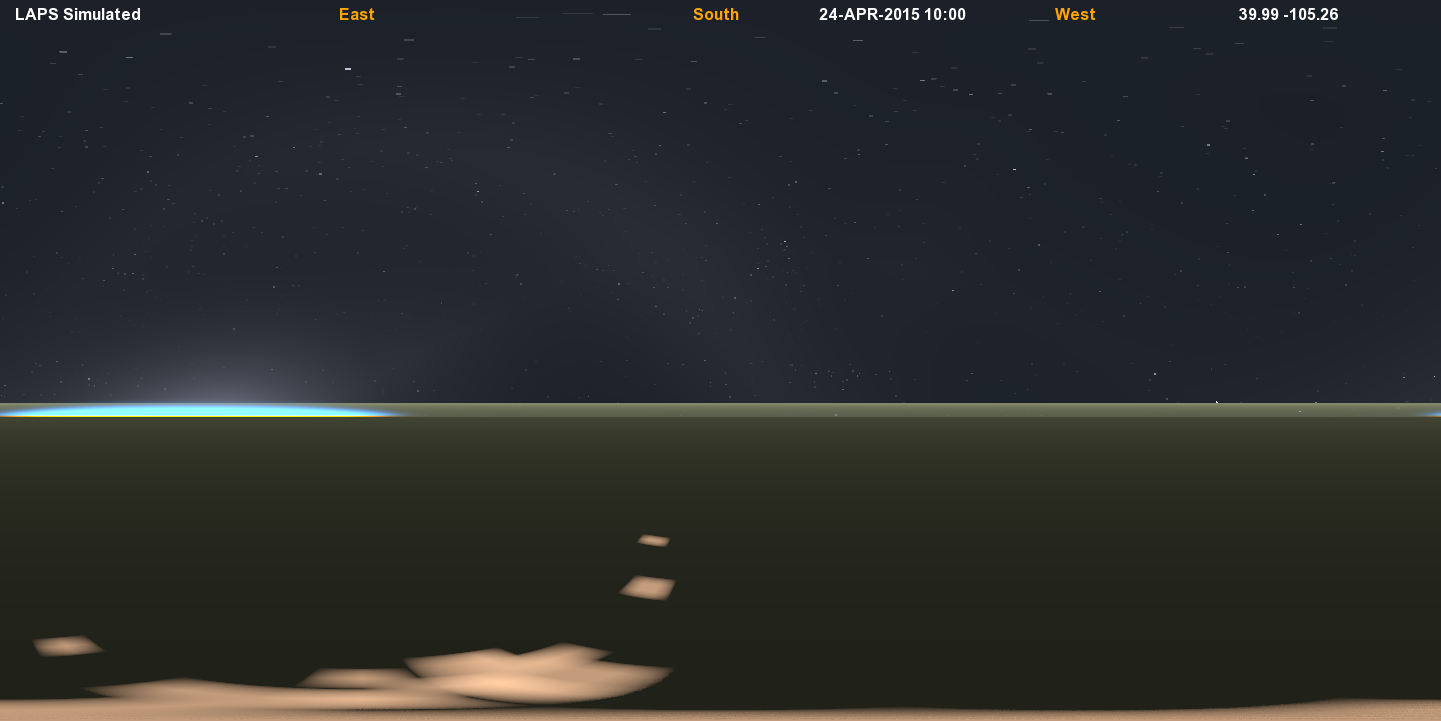
This view from 200km altitude better shows the airglow, assuming it is a horizontally uniform shell. Twilight is underway with
the sun located 8 degrees below the limb. City lights are shown in some areas. The zodiacal light is poking above the horizon. Compare with this
similar image from the International Space Station.
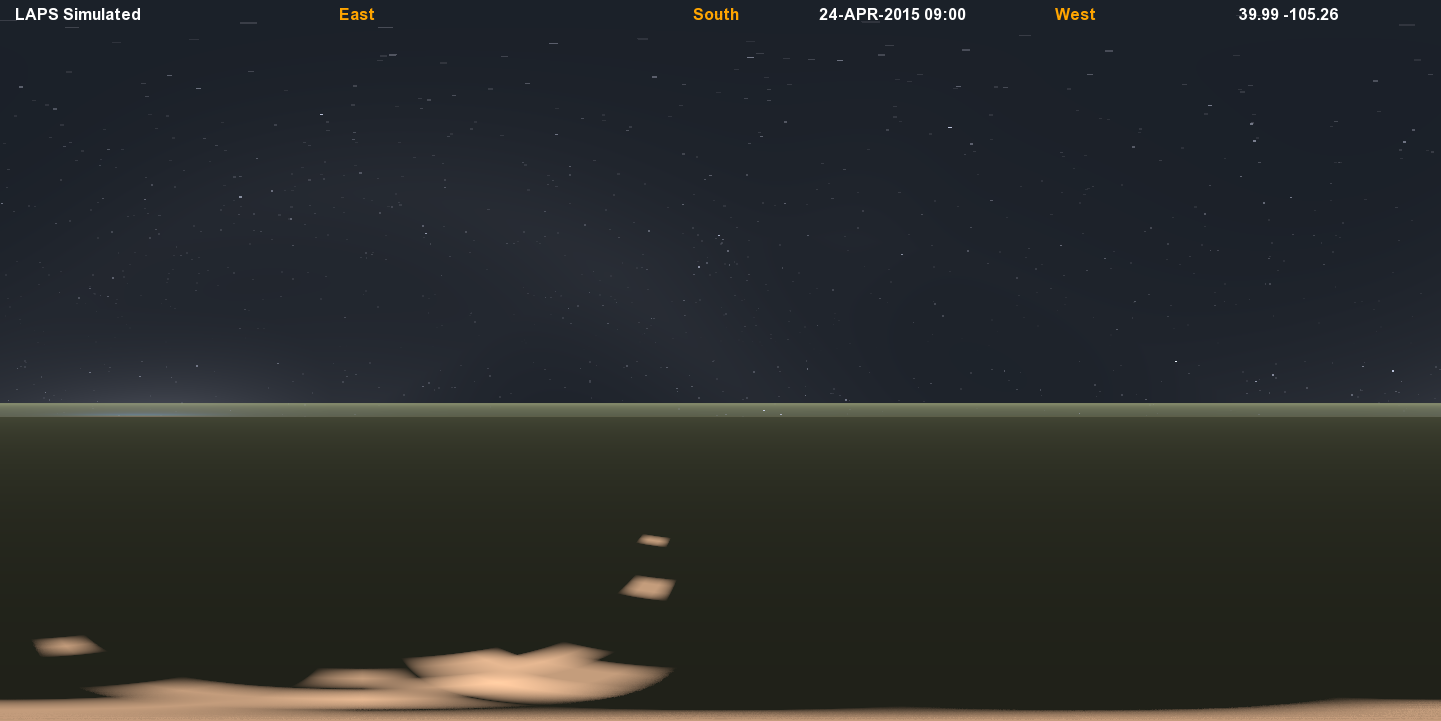
This view has twilight just beginning with the sun located 15.95 degrees below the limb. The limb itself is pushed down quite a bit below the horizontal due to the
200km altitude point of view.
The zodiacal light is poking above the limb. Compare with this
similar image from the International Space Station.
Little or no moonlight is present so we see the clouds illuminated primarily by the airglow.
